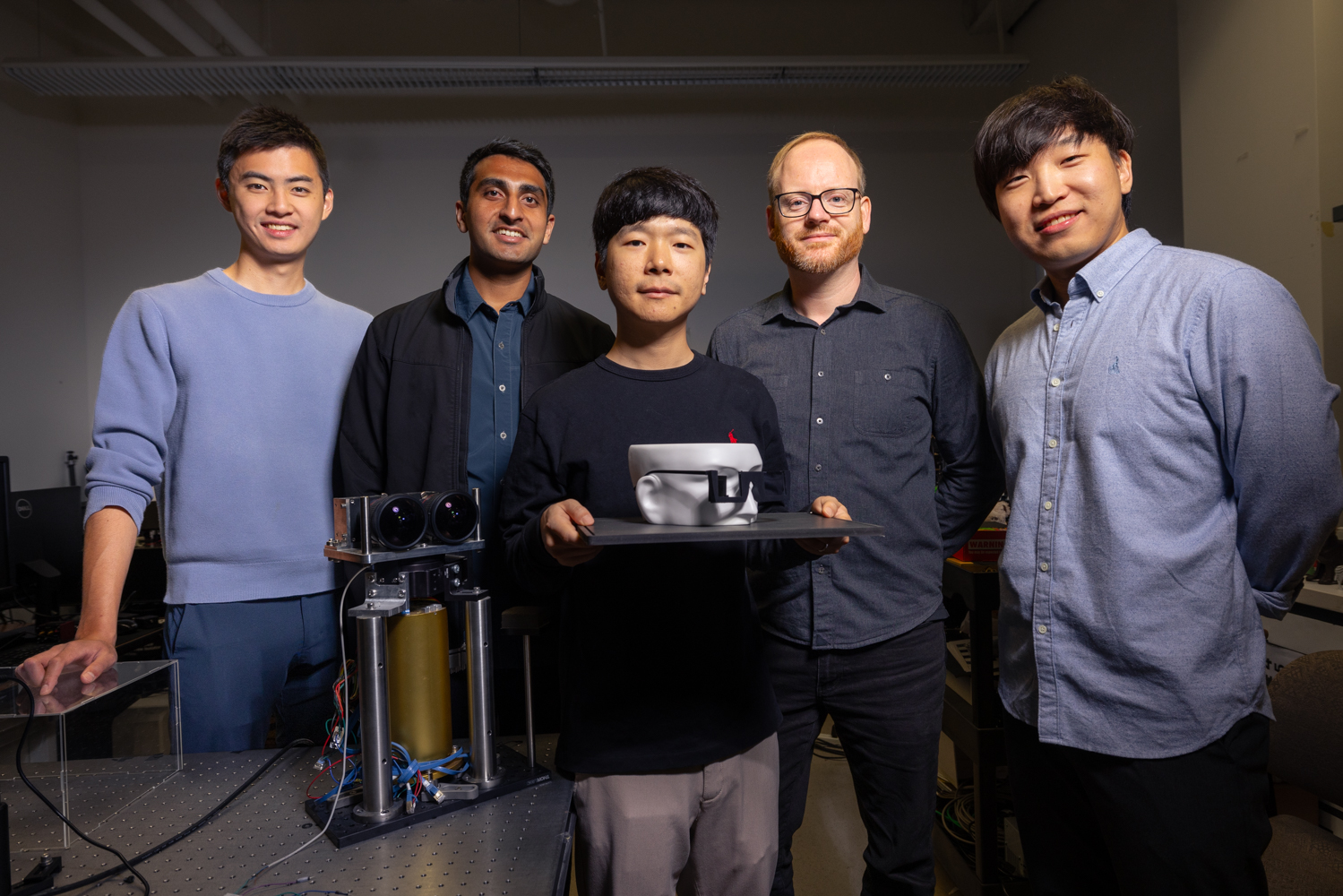Prototype of the compact augmented reality glasses. Through holography and AI, these glasses can display full-color, 3D moving images over an otherwise direct view of the real world. (Image credit: Andrew Brodhead)
Researchers in the emerging field of spatial computing have developed a prototype augmented reality headset that uses holographic imaging to overlay full-color, 3D moving images on the lenses of what would appear to be an ordinary pair of glasses. Unlike the bulky headsets of present-day augmented reality systems, the new approach delivers a visually satisfying 3D viewing experience in a compact, comfortable, and attractive form factor suitable for all-day wear.
“Our headset appears to the outside world just like an everyday pair of glasses, but what the wearer sees through the lenses is an enriched world overlaid with vibrant, full-color 3D computed imagery,” said Gordon Wetzstein, an associate professor of electrical engineering and an expert in the fast-emerging field of spatial computing. Wetzstein and a team of engineers introduce their device in a new paper in the journal Nature.
Though only a prototype now, such a technology, they say, could transform fields stretching from gaming and entertainment to training and education – anywhere computed imagery might enhance or inform the wearer’s understanding of the world around them.
“One could imagine a surgeon wearing such glasses to plan a delicate or complex surgery or airplane mechanic using them to learn to work on the latest jet engine,” Manu Gopakumar, a doctoral student in the Wetzstein-led Stanford Computational Imaging lab and co-first author of the paper said.

New holographic augmented reality system that enables more compact 3D displays (Image credit: Andrew Brodhead)
Barriers overcome
The new approach is the first to thread a complex maze of engineering requirements that have so far produced either ungainly headsets or less-than-satisfying 3D visual experiences that can leave the wearer visually fatigued, or even a bit nauseous at times.
“There is no other augmented reality system out there now with comparable compact form factor or that matches our 3D image quality,” said Gun-Yeal Lee, a postdoctoral researcher in the Stanford Computational Imaging lab and co-first author of the paper.
To succeed, the researchers have overcome technical barriers through a combination of AI-enhanced holographic imaging and new nanophotonic device approaches. The first hurdle was that the techniques for displaying augmented reality imagery often require the use of complex optical systems. In these systems, the user does not actually see the real world through the lenses of the headset. Instead, cameras mounted on the exterior of the headset capture the world in real time and combine that imagery with computed imagery. The resulting blended image is then projected to the user’s eye stereoscopically.
“The user sees a digitized approximation of the real world with computed imagery overlaid. It’s sort of augmented virtual reality, not true augmented reality,” explained Lee.
These systems, Wetzstein explains, are necessarily bulky because they use magnifying lenses between the wearer’s eye and the projection screens that require a minimum distance between the eye, the lenses, and the screens, leading to additional size.
“Beyond bulkiness, these limitations can also lead to unsatisfactory perceptual realism and, often, visual discomfort,” said Suyeon Choi, a doctoral student in the Stanford Computational Imaging lab and co-author of the paper.

Wanda Parisien is a computing expert who navigates the vast landscape of hardware and software. With a focus on computer technology, software development, and industry trends, Wanda delivers informative content, tutorials, and analyses to keep readers updated on the latest in the world of computing.


